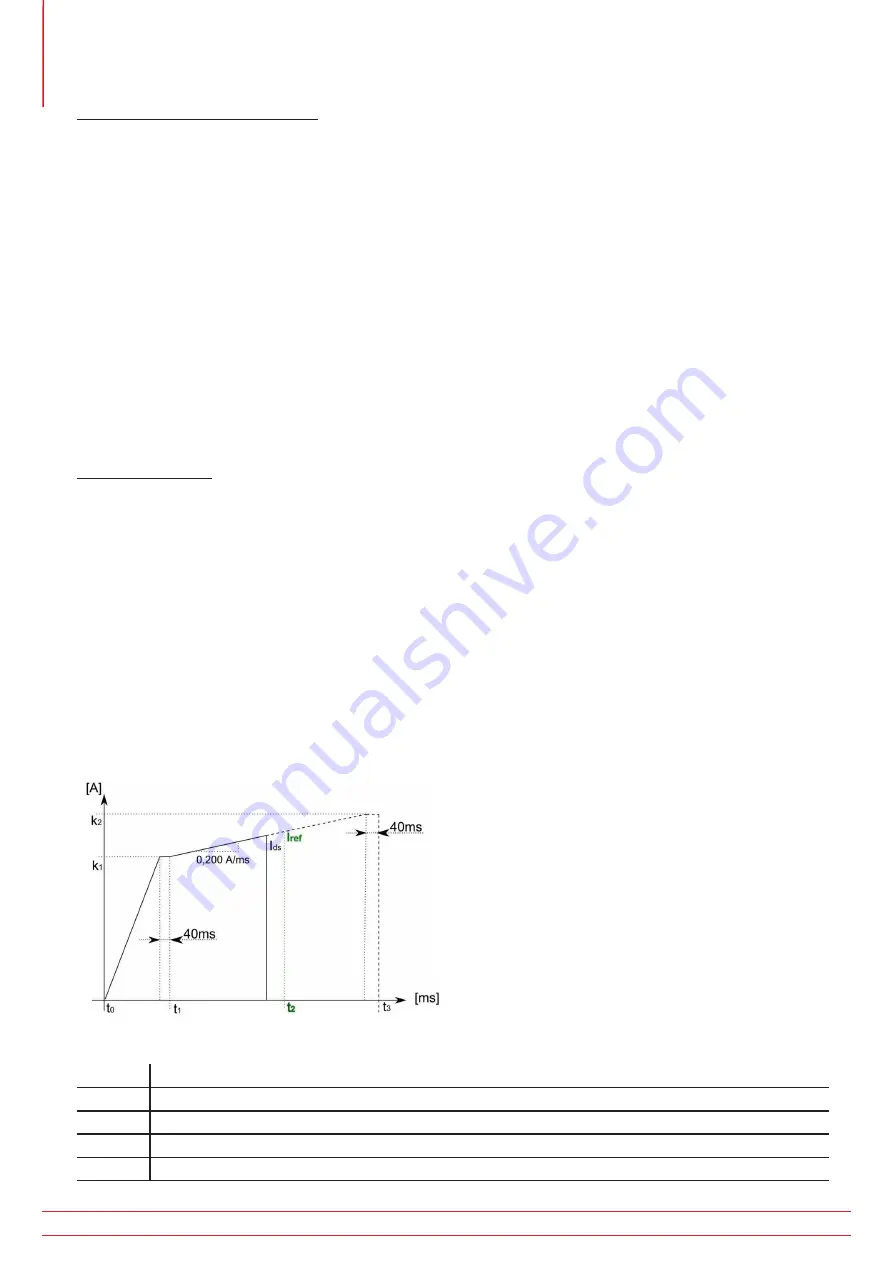
Interpretation IEC NORM (200 A/s)
The ‘IEC norm’ function is always active up to I_ref values of 8,000 A. This means that the measurement interval is
always performed at a current rise of 200 A/s.
For I_ref values higher than 8,000 A, the system uses slightly higher current rises to conserve battery power by
default. However, if the operator wishes to perform the measurement at 200 A/s, the ‘IEC norm’ option can be
checked.
If the option is unchecked, the system will use the following current rises during the measurement interval:
Up to 8,000 A: 200 A/s.
Above 8,000 A, up to 16,000 A: 500 A/s.
Above 16,000 A: 1,000 A/s.
The current rise selection depends on the entered I_ref value, not on the number of DC Current Generators
connected to the Support Carriage.
Measure procedure
I
ds
The value displayed under I
ds
is the result of the last test.
An I_ref value obtained from the Quicktest Mode will be overwritten by the first successful Auto Mode test, to
provide a better measurement interval. Ideally, the tripping of the High-speed DC Circuit Breaker occurs in the centre
of the measurement interval.
The system assumes that ‘K1’ and ‘K2’ are not altered and that the High-speed DC Circuit Breaker is consistent in its
trip value. If this is not the case, manual re-adjustment of I_ref may be necessary.
Measurement principle
Auto Mode performs the following current injection:
t1 =
1,000 ms. For high current injections, 500 ms is used to conserve battery power.
k1 =
Point e, start of the measurement interval.
I
ds
=
Measured release current.
k2 =
Point f, end of the measurement interval.
t3 =
The test duration, depends on the e and f values and applied current rise.
www.megger.com
56
Operation






























